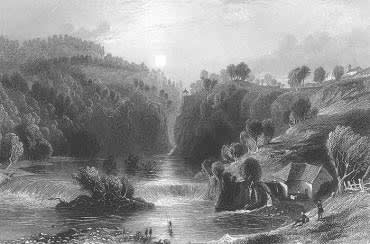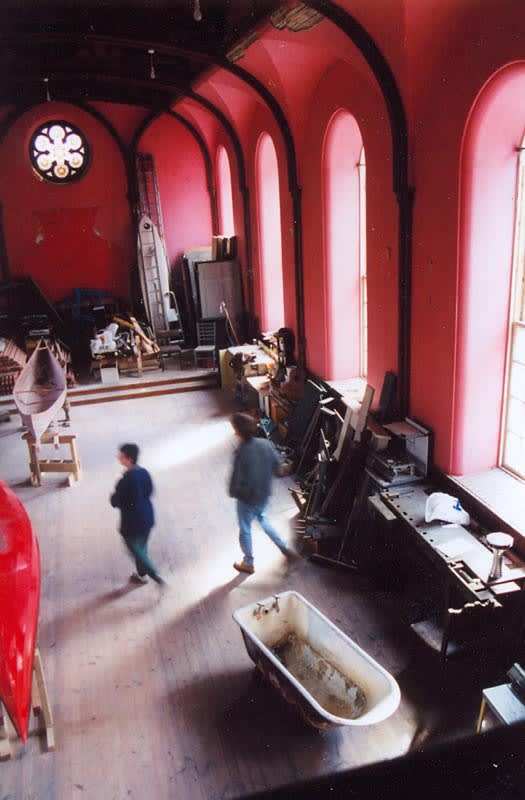
The use of the old Beauly parish church as a commercial art gallery is often cited as one of the best examples of the reuse of a redundant church. Most of the original features and characters of the 18th century building remain, and this is only enhanced further by the art of Kilmorack Gallery - a marriage of the old with the visions and technical skills of contemporary Scottish artists. It is still very much a spiritual building. I often get asked about its history, so here is a little bit more.
Kilmorack parish is one of the largest in Scotland, stretching from Beauly in the East to Tomich in the west. The name Kilmorack (Kil Morok or Moroc) apparently comes from an early dedication to St Moroc, a 9th century Bishop of Dunkeld. The location of the church alone, next to what in pre-hydro days was a series of spectacular cascading waterfalls, must have had spiritual pull, especially to an early missionary priest with a nose for lay-lines. Today it is still an intoxicating place. The river Beauly opposite what is now Kilmorack Gallery is one of Scotland's finest salmon rivers, surrounded by woodlands and enchanting walks.

Historically the Old Kilmorack Church (1786) was the main church (church of Scotland) for the village of Beauly. The godly folk, which was all of them, walked the three miles up hill to attend services until the current Church of Scotland kirk was built in the mid-19th century. The New Statistical account (1843) also notes how folk were packed in, standing in the aisle. Further down the glen, towards Cannich, it was more Catholic - Chisholm country: scary to some and home to the unruly.
The old kirk building is beautiful and unusual. Externally, the south facing façade and two gable ends are entirely Georgian with their hallmark elegance and symmetry, along with original leaded paints. The mason's marks have recently been covered with fresh lime-harling in the church's early yellow colour. Over the last almost three-hundred years it has gone from pink, to yellow to an off-white colour. Glass on the southern side is mostly complete hand-spun crown glass. Atop the steeply pitched Balahulish state roof is a fine six legged classical belfry to the west end and a ball finial to the east. Datestones are on the ends of the skews.
Internally the church is very different and a very pleasant surprise to enter. Rather than being 18th century as expected, it is intact gothic revival dating back to 1835. At this point two new arched stained glass windows were punched through the north wall; original Georgian windows on the gables were faced with fine rose-windows; and the interior was re-cast with new pink plaster, fine panelled woodwork and wooden trefoiled shafts reminiscent of gothic stone columns. There are many beautiful features still intact, including central chandelier hooks in the form of mermaids, the original pink leaded paint, rose insets formed in the original 18th century queen-post design roof. However, you don't need to know all this. It is enough to simply walk in to be powerfully affected by the sense of all the thought that has gone into creating the unity, symmetry, and beauty of the interior. The impressive workmanship too.
Such a fine building must have had a talented architect but no name has been found. It was amply funded too. Interestingly coming when the Lovat estates were forfeited (1745 - 1782) and government improvements were seen as a way of taming the Catholic/Jacobean locals. Could the funding of new churches at Kilmorack (and Kirkhill) have been part of a drive to form more 19th century mindset? Thirty-seven years later (in 1834) the government famously supported the building of 'Telford Churches' across the Highlands.
The church was abandoned in 1972 until it's rebirth as an art gallery in 1997.
Comments
most interesting info on the old church, now your headquarters. thank you.
My ancestors angus mackinnon of urchany & jane mcgregor of fairley (woods) married in the church in Feb1818 and lived in urchany, monar and cannich (or carnach) for several years. He was a shepherd.